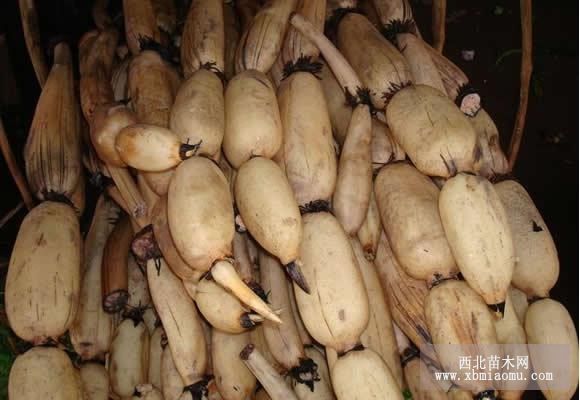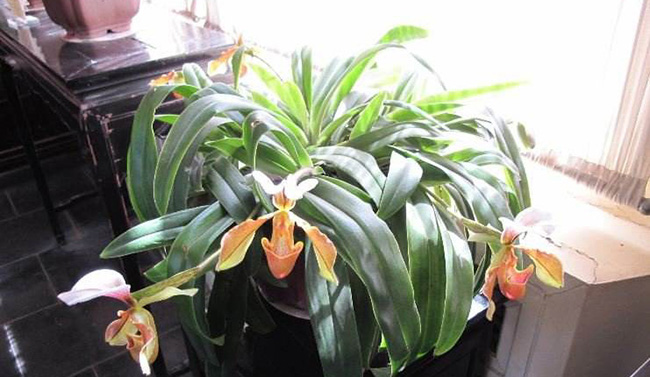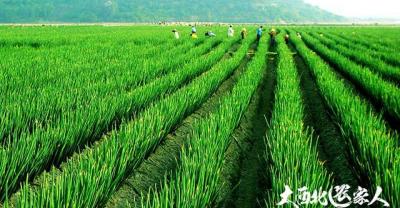Plant cultivation and Pest Control of Water Shield Grass
Encyclopedia of water shield grass
Water shield grass, which belongs to the plant kingdom, is one of the species of water shield grass in the family Elaeagnaceae. It is native to South America, introduced to aquariums around the world and naturalized in warm areas. Perennial aquatic herbs born in rivers, lakes, canals, and canals of plain water networks.
Morphological characteristics of Water Shield Grass
The plant stem of water shield grass is slender. Leaves of two types: submerged leaves opposite, round fan-shaped, palmately divided, lobes 3-4 times bifurcate. Because of its elegant and beautiful submerged leaves, it is often used as an ornamental plant in the aquarium. Floating leaves few, alternate at the top of flower branches, leaf blade narrowly elliptic, peltate. Flowers solitary branches upper leaf axils, tricadic, Corolla white.
Growth environment of water shield grass
In China, it usually blossoms but does not bear fruit, and propagates and spreads mainly by broken branches with submerged leaves.
Distribution range of water shield grass
Origin: South America
Invading sites: Jiangsu, Shanghai, Zhejiang, Shandong, Beijing
The time and place of invasion: it was first discovered in Yin County, Zhejiang Province in 1993, and specimens were collected in Taihu Township, Wu County, Jiangsu Province in 1998.
Cultivation techniques of Water Shield Grass
Ways of transmission
In China, it usually blossoms but does not bear fruit, and propagates and spreads mainly by broken branches with submerged leaves.
Control method.
A variety of control methods have been tried in the United States and Australia, such as the use of herbicides, lowering the water level (shelving the field), mechanical cutting, herbivorous fish feeding and so on.
Damage of diseases and insect pests of water shield grass
It is likely to escape after being introduced as an ornamental plant in the aquarium. In the United States, Australia and other places, its intrusion can cause the rise of the water level of reservoirs and ponds to increase leakage, blockage and flooding in irrigation canals; a large amount of water shield grass decays after death, which consumes oxygen, which is harmful to fisheries; dense water shield grass hinders the recreational, agricultural and aesthetic functions of lakes and reservoirs; in Australia, water shield grass has a tendency to replace native aquatic plants, thus affecting biodiversity. Therefore, the potential threat of the invasion and spread of water shield grass to China's national economy and ecosystem should not be underestimated.
The cultivation and pest control techniques of lotus root were briefly introduced in this paper. Key words lotus root; cultivation Technical drawing classification number S645.1 document identification code B article No. 1004mur8421 (2007) 09mur062mur01 lotus root is a kind of aquatic economic plant with high nutritional value, which contains a variety of amino acids and minerals needed by the human body. it can be processed into a variety of convenient food, can also be directly eaten as a vegetable, can be eaten as a fruit in midsummer, can play a cool role in summer. The yield of conventional cultivation of lotus root can reach more than 22500 kg per hectare. The key points of cultivation techniques are as follows.

The main results are as follows: (1) the lotus root field chooses the leeward to the sun, the drainage and irrigation is convenient, the tillage layer 20-30cm, and the fertile field with plough bottom is used as lotus root field. Planting lotus root in the pond requires that the water depth should not exceed 1m, the water level is relatively stable, and there is a plough bottom. (2) the whole field fertilization takes the area of 25 °north latitude and 1300m above sea level as an example, the planting time of lotus root is before and after the Spring Equinox, so the whole field can be fertilized with base fertilizer after sting. The base fertilizer is mainly organic fertilizer, with farm manure 22500-37500 kg and compound fertilizer 750kg per hectare. Special attention should be paid to the application of ammonia bicarbonate and paulownia in lotus root fields. (3) the oblique planting method was adopted, that is, the lotus root head was buried in 10-13cm in the soil, the tail segment was slightly tilted up in the water, the distance between the nests and rows was 2mx2m or 2mx2.5m, and the amount of seeds used per hectare was 3000-4500kg. If the lotus root is reserved for breeding field, the density can be increased appropriately. When planting, the direction of the lotus root head is better than the cross between the rows, and the marginal line should follow the direction of the ridge, always pointing the head of the lotus root to the ridge of the field. Because the growth of lotus root is generally along the direction of the lotus root, this planting method is beneficial to lotus root and growth. (4) Field management 4.1 from planting to closing of lotus leaves, there should be timely ploughing and weeding for 3 times, the first time before the lotus leaf budding, the second time after the floating leaf appeared, and the third time after the standing leaf. 4.2 topdressing should be applied twice according to the growth of lotus root in the growing season. For the first time, urea 112.5 Mel 150 kg per hectare was applied when two standing leaves were just produced, and urea 75-112.5kg plus potassium fertilizer 225-300kg per hectare was applied for the second time before closure. Rotten cake fertilizer or farm manure can be used as topdressing. 4.3 Water level regulation of lotus root has different requirements for water in different growth periods, and the principle of adjusting water level from shallow to deep, and then from deep to shallow should be mastered. The 5-10cm water level was maintained before the standing leaves were protruded, and the vertical leaves extended to the front of the lotus root. With the growth of the standing leaves, the water level could be raised to 30-60cm, and the water level decreased to about 5cm at the lotus root stage. Draining water 20 days before picking lotus root is beneficial to picking lotus root. 4.4 Disease and pest control 4.4.1 lotus root virus disease. Control methods: pay attention to the selection of disease-resistant varieties; strengthen the investigation, once newly infected plants are found, they should be dug up as soon as possible, and bamboo marks should be inserted into the diseased plants to continue to monitor the disease, and the nearby lotus root plants should not be left as seed plants during harvest; grasp the control of aphids and control aphids The diseased field was sprayed with foliar nutrients (such as potassium dihydrogen phosphate, Yemanbao, etc.) plus 0.05% rain 0.1% black soap or laundry soap, or 5% bacteriological detergent 300x or Ns-83 100x solution. Continuous spraying 2Mel for 3 or more times, once every 10-15 days, in order to passivate the source of poison, promote plant growth and reduce the disease; seed lotus root was selected from disease-free fields. 4.4.2 small sclerotia leaf rot of lotus root leaves. Prevention and control methods: there is no mature prevention and treatment experience. It is recommended to spray or pour 5% Jinggangmycin water agent or soluble powder 500ml 1000-fold solution, or 20% flurosemide (Wangjiaduo) wettable powder 800ml 1000-fold solution, or 50% Nongliling (ethylene sclerotiorin) wettable powder 1000 times 1300 times, or 1000 times of raw EC, or 50% carbendazim 500 times of wettable powder. Spray 2Mel 3 times in succession, spray once every 7-15 days, apply alternately, close before and then sparse. Such as the method of pouring. The dosage of the above solution should be doubled and diluted with water for safety. The water level was lowered to the shallow water layer as much as possible before application, and the backwater returned to the required water level after 24 hours of application. 4.4.3 insect pests. APHIS gossypii, rice root and leaf beetle and Spodoptera litura are the main pests in lotus root field, which can be controlled by low toxicity and high efficiency insecticides in the initial stage. (5) after harvest entered autumn and winter, the aboveground part stopped growing and wilted gradually. It is the best time to harvest lotus root. If it is affected and restricted by the progress of processing and sales, when it cannot be harvested in time, it will be harvested before the Spring Equinox in the following year. Before harvest, the lotus root field is drained in advance, and it is better not to dance in the mud and crack the chicken claws slightly. When picking lotus root, you only need to gently open the soil along the growth direction of lotus root (that is, the direction pointed by the head of lotus root when planting), and the whole lotus root can be taken out. When picking lotus root, we can start from one end of the field and try our best to avoid blindly hoeing and digging or muddy water harvesting when the lotus root field is not dry, so that the lotus root can be harvested completely, increase the yield, and reduce the damage as much as possible, so as to better maintain its commerciality. Cultivation techniques of spring grass and measures taken for disease and pest control
Speaking of spring grass, it may not be very clear to most flower lovers what it looks like, but there are also a small number of people who like to raise this small plant. Spring grass, also known as spiral grass, gets its name because its leaves are twisted and twisted. Today, I will take you to have an in-depth understanding of the cultivation techniques of spring grass and the measures taken to prevent and control diseases and pests.
Planting and cultivation
Water and fertilizer:
Spring grass likes the humid environment, it is appropriate to keep the soil moist during the growing period without stagnant water. If long-term drought and lack of water, the plant will not die, but the growth will stagnate, the leaves will yellowing, and even withered; while long-term stagnant water in the basin soil will cause bulb rot. Water can often be sprayed to the plant to increase air humidity and prevent the top of the leaves from drying up. In summer, in order to avoid flooding in the rainy season, the flowerpot can be placed on the shelf or on a stage with a certain height, and pay attention to control watering to prevent the bulb from rotting due to stagnant water, but the pot soil can not be completely dry to prevent the bulb from drying up. The peak period of plant growth is from October of each year to April of the following year. Mature thin liquid fertilizer or compound fertilizer is applied once a month to provide sufficient nutrients to make the plant grow vigorously. After the flower is extracted in spring, 0.5% potassium dihydrogen phosphate solution is sprayed 2 to 3 times to promote flowering.
Pollination:
After flowering, different plants should be selected for artificial pollination to make the plants bear fruit, and the seeds should be harvested after maturity so as not to scatter them; if there are no seeds left, the remaining pedicels should be cut off in time after flowering so as not to consume too much nutrients.
Change the basin:
Spring grass is changed once a year at the end of August. The basin soil is required to be fertile and loose, rich in humus, and has good drainage and permeability. It can be mixed with 3 portions of saprophytic soil or peat soil, 2 parts of vermiculite or sandy soil, and mixed with a small amount of bone powder. Cut off the rotten root system when changing the basin, plant the bulb out of the soil 1 / 3 or so, pour water after planting and maintain it in a place with sufficient light. After that, pay attention to keep the soil moist, and soon new leaves will grow from the top of the bulb.
Pest control
There are not many diseases and insect pests of spring grass, which mainly include snails and nematodes in the soil and other harmful bulbs. When planting, the soil can be treated at high temperature to kill pests and eggs in the soil, and insecticidal pesticides such as carbofuran can also be mixed in the cultivated soil, but because carbofuran is a highly toxic pesticide and its degradability is very poor, if it is not used properly, it will cause harm to the environment, so we must be careful when using it.
The main diseases of spring grass are bulb rot caused by long-term stagnant water due to poor soil permeability, and leaf tip dryness caused by dry air, long-term lack of soil water and other factors, which can be prevented by improving the cultivation environment.
The above is what I know today about the cultivation techniques of spring grass and the measures taken to control diseases and insect pests. I hope flower friends will be helpful to you after reading this article. If you want to know more, please continue to follow our succulent flower bed. We will provide you with more relevant knowledge!
- Prev

The cultivation methods and precautions of Paphiopedilum
Orchid encyclopedia orchid, also known as slipper orchid. Orchid perennial herb. Most of them are terrestrial species, and there are many hybrid varieties. It is one of the most widely cultivated orchids. It is mainly distributed under tropical and subtropical forests in Asia. Likes warm, humid and semi-shady environments. Stems very short; leaf blade banded or oblong-lanceolate
- Next

Melon (cantaloupe) yield 5 big planting tips!
1. Use ripe soybeans as fertilizer to cook soybeans, cool them, and plant them as base fertilizer, which can effectively provide nutrients for melon yield and growth. Soya beans contain...
Related
- Fuxing push coffee new agricultural production and marketing class: lack of small-scale processing plants
- Jujube rice field leisure farm deep ploughing Yilan for five years to create a space for organic food and play
- Nongyu Farm-A trial of organic papaya for brave women with advanced technology
- Four points for attention in the prevention and control of diseases and insect pests of edible fungi
- How to add nutrient solution to Edible Fungi
- Is there any good way to control edible fungus mites?
- Open Inoculation Technology of Edible Fungi
- Is there any clever way to use fertilizer for edible fungus in winter?
- What agents are used to kill the pathogens of edible fungi in the mushroom shed?
- Rapid drying of Edible Fungi

